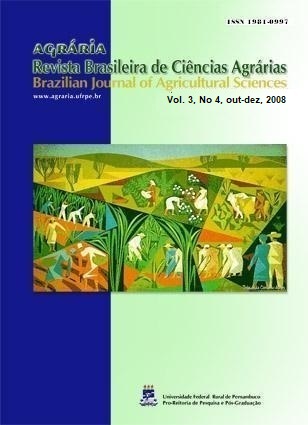Morphometry, granulosa cells and nuclear chromatin of preantral follicles associated or not to vitrification of bovine ovarian tissue
DOI:
https://doi.org/10.5039/agraria.v3i4a391Keywords:
biotechnology, cryopreservation, ovarian fragmentsAbstract
The objective of this study was to evaluate the effect of ovarian fragments vitrification in the morphometry, number of granulosa cells and nuclear chromatin of preantral ovarian follicles of bovines. Ovarian was obtained at a local slaughterhouse and cortex fragments were removed. One third were
immediately fixed and processed for histology (T0 - control). The remaining fragments were divided in two treatments, TI - toxicity test and TII - vitrification. In TI the fragments were exposed to only cryoprotectants and fixed in Carnoy and in TII were utilized DMSO and ethylene glycol supplemented with sucrose. The results indicated that the primordial follicles when vitrified or exposed to cryprotectants did not show variation in morphometry and amount of cells of the granulosa (p > 0.05), exception to primary follicles (p<0.05) when compared to T0. The analysis of the nuclear chromatin of follicles vitrified or cryprotectants exposed showed significant difference (p<0.05) when compared to T0 with the control treatment, particularly in TII. In conclusion the vitrification technique affected negatively the morphology of bovine follicles enclosed in ovarian tissue.



